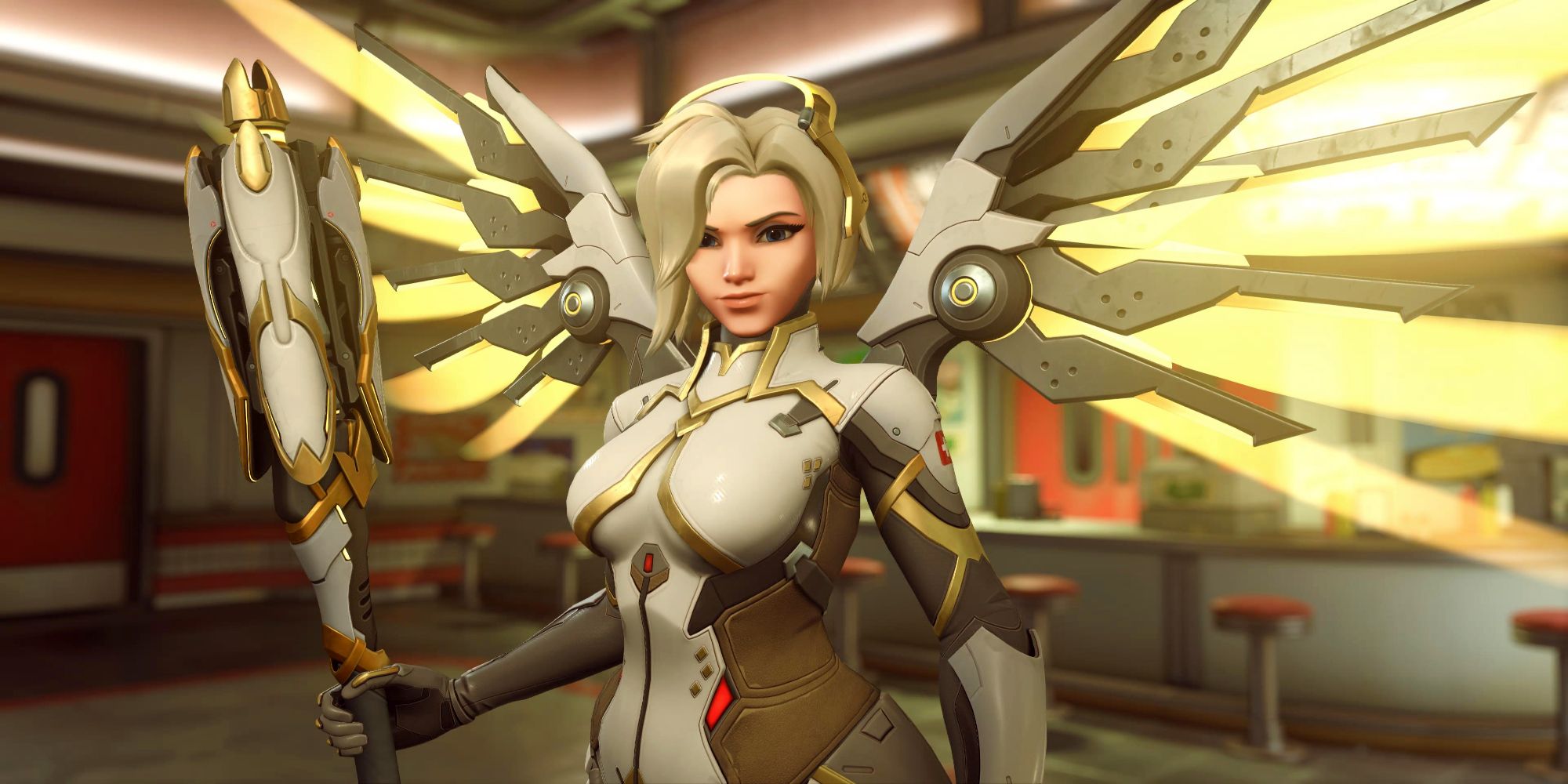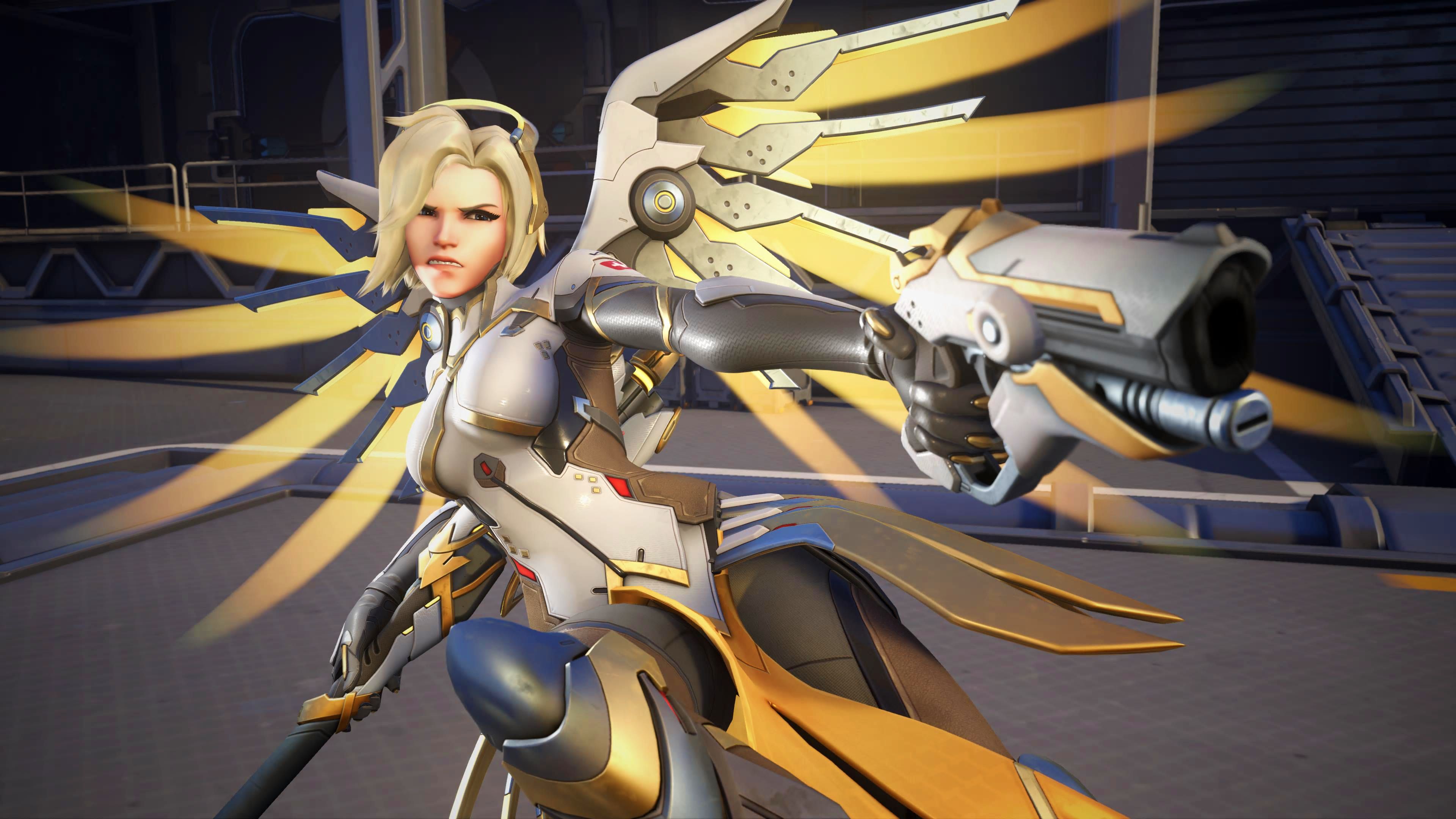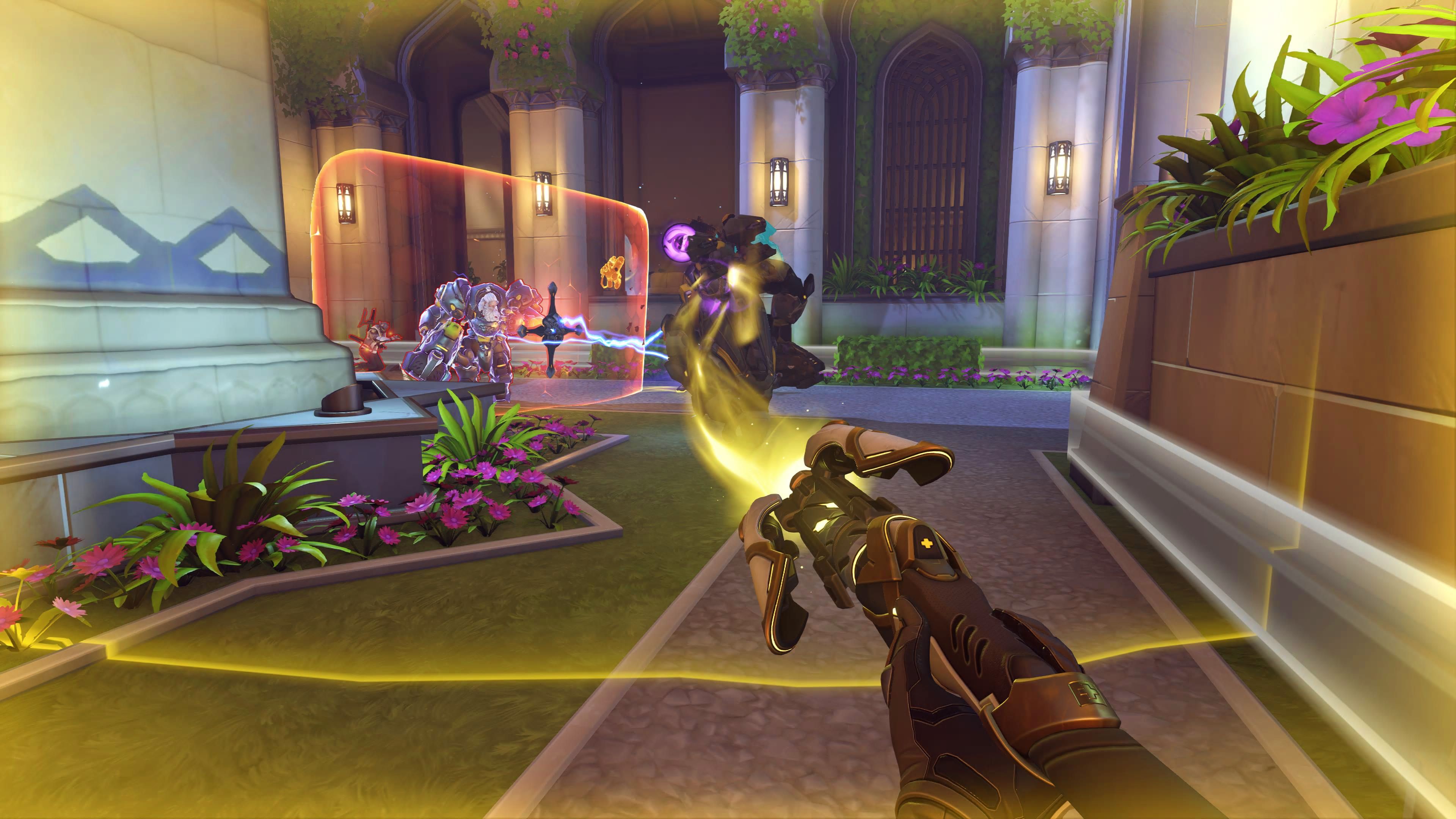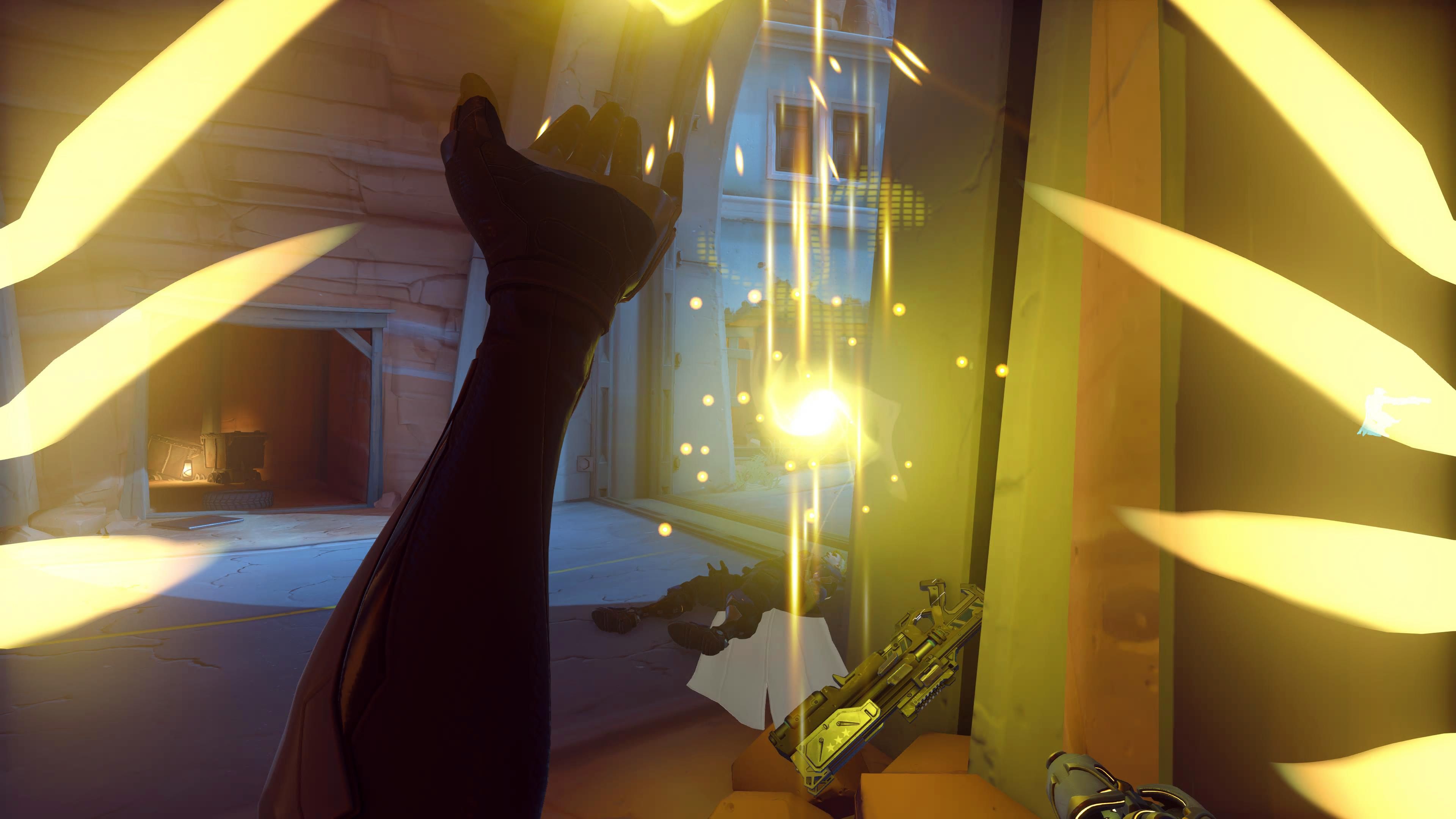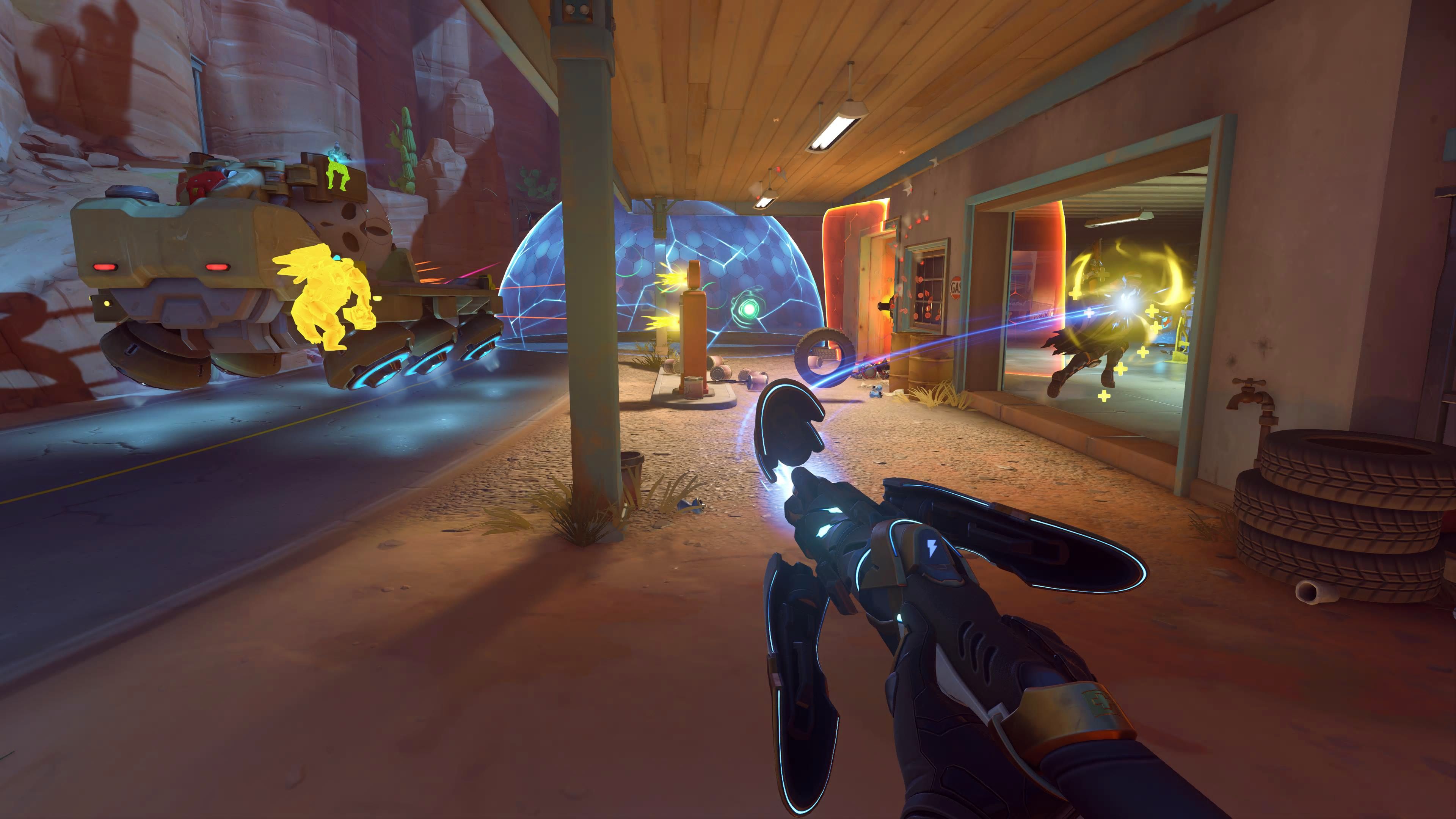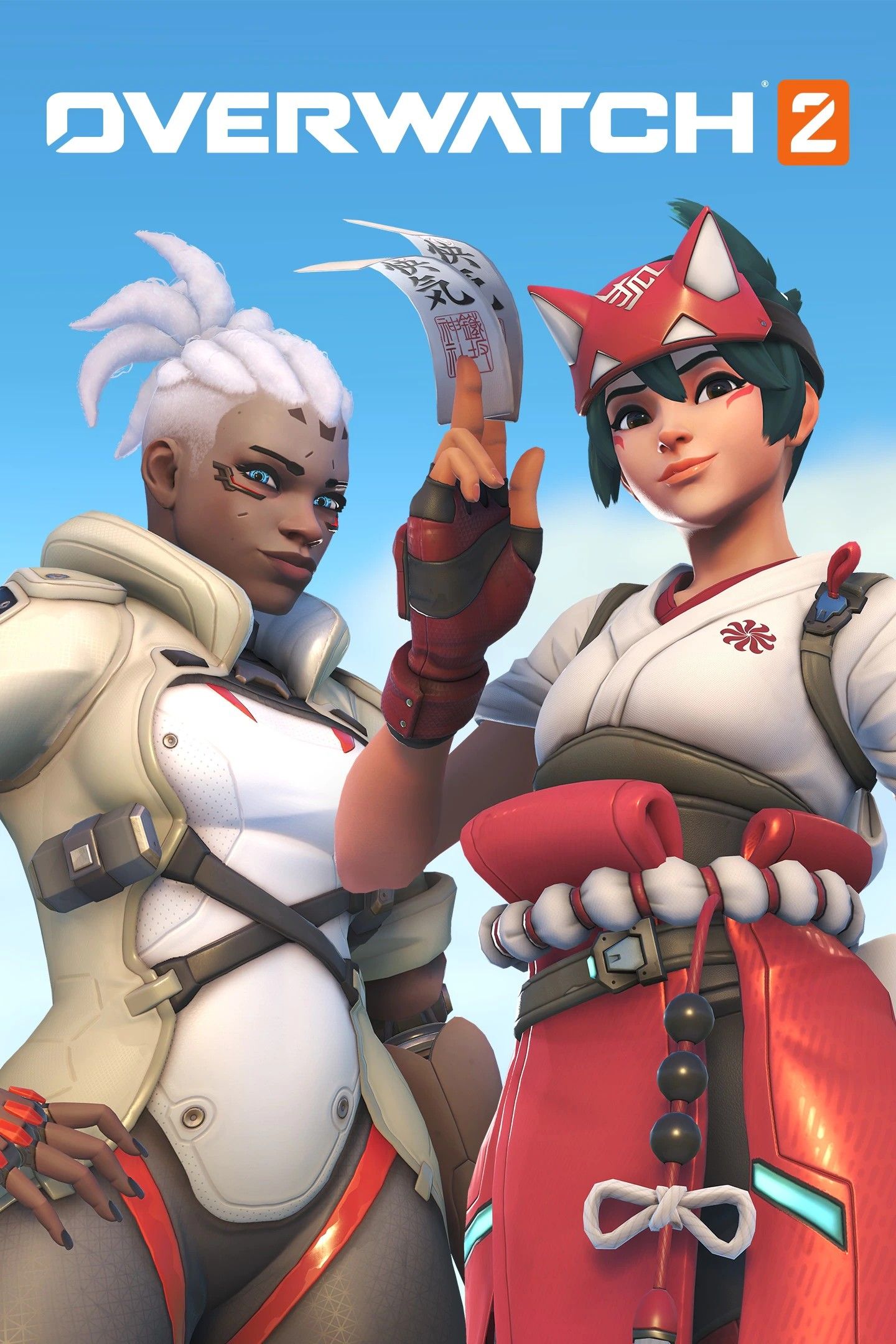Quick Links
A skilled healer and expert medical researcher, Overwatch’s guardian angel Mercy is one of the best picks for skilled Overwatch 2 players looking to give their all in a support role. With a set of abilities and equipment geared entirely towards healing, boosting, and resurrection, Mercy is almost entirely oriented toward supporting her team, leaving very little room for players to do anything else. However, while some players might mistake Mercy’s pinpoint focus on support for inflexibility, in skilled hands, she can provide just about everything a team in Overwatch 2 needs to succeed on the battlefield. Whether securing payloads and objectives in Quick Play or capturing flags and scoring eliminations in Arcade mode, Mercy’s greatest strength is her ability to slot neatly into any 5v5 team of Overwatch 2 heroes and villains players can assemble.
A medical prodigy and staunch advocate for peace, Dr. Angela Ziegler initially joined the Overwatch organization to head its medical research division. Still, she soon found she could do far more serving on the frontlines. As Overwatch worked to resolve the global Omnic Crisis, Dr. Ziegler became the organization’s most prominent battlefield medic, taking on the Mercy persona and leveraging advanced medical technology to heal and support her teammates out in the field. Later, Mercy traveled the world healing the scars of war wherever she found them, only to be drawn back to a reformed Overwatch to serve again.
Other Overwatch 2 Support heroes, such as Kiriko, have abilities or equipment allowing them to deal or mitigate some damage. However, Mercy’s capabilities in doing damage or tanking are minimal, and players will largely be using her Caduceus Staff to cast beams that heal her teammates’ health or boost their damage. Mercy also wears an advanced winged suit that gives her the Guardian Angel ability, which allows her to fly towards an ally to provide support, and her ultimate Valkyrie, which offers powerful boosts to all of her abilities. Finally, her iconic and powerful Resurrect ability allows her to raise a single teammate back from elimination. All in all, she has a robust set of abilities and equipment, particularly when players take advantage of useful tips and strategies.
Use The Caduceus Blaster Sparingly, If At All
It’s worth noting that Mercy does have her Caduceus Blaster, a pistol sidearm similar to the one wielded by Overwatch 2 Tank Hero D.Va when she’s out of her mech. However, it’s only really capable of doing significant damage at close range, and given that Mercy can’t take much damage, its use is extremely situational. It’s best used when Mercy is alone and facing down non-Tank enemy heroes with low health, and in most other situations, it can prove to be a liability. Therefore, Mercy isn’t a Damage hero and shouldn’t be played as one.
Overall, Mercy players will find that they do much more damage by casting Caduceus Staff’s damage-boosting beam on one of their allies. Damage and Tank heroes will often do much more damage than Mercy can by firing her blaster, so in most situations, Mercy should boost her teammates and do lots of indirect damage rather than taking potshots with her sidearm.
Remember To Switch Between Boosting And Healing
Like other Overwatch 2 Support heroes such as Moira, players must find a careful balance when playing as Mercy. The Caduceus Staff is the most consistently useful part of Mercy’s kit, allowing her to target a single ally and either cast a beam to heal them or cast a beam that boosts their damage. Players must be ready to switch between the two as the need arises, as they’re both useful. In hectic head-to-head fights where her team is under pressure, using the Caduceus Staff’s healing beam is quite literally a lifesaver. Mercy can continually stabilize her team’s Tanks as they soak up damage while Damage heroes flank and eliminate enemy Support heroes.
The staff’s damage-boosting beam is best used when enemy teams are vulnerable, as it can allow Mercy’s teammates to break already-weak barriers and armor and crush enemy heroes. When Damage heroes such as Pharah in Overwatch 2, Soldier 76, or Genji use their damage-dealing ultimate abilities, a great strategy is for Mercy players to hit them with the boost beam, making their ultimate abilities even deadlier. Soldier 76’s Tactical Visor ultimate ability is particularly deadly when boosted, as it allows Soldier 76’s rifle to lock on to enemy heroes, so any shots fired never miss. With Mercy’s boost, he can effectively eliminate entire teams of heroes.
However, Mercy players should also be mindful not to “pocket,” which means supporting one particular teammate above all others. Mercy excels at doing single-target healing thanks to her Caduceus Staff, but this means players need to concentrate more on providing healing and boosts to her whole team by switching between allies.
Watch Out When Resurrecting
Much like Winston and his Primal Rage ultimate, Mercy’s Resurrection ability is perhaps the most iconic aspect of her character. Veteran Overwatch players will undoubtedly remember that in the game’s early days, Resurrection was Mercy’s ultimate and could be used to resurrect entire teams in one go. However, Resurrection has since been reworked, and in Overwatch 2 now serves as one of Mercy’s abilities, allowing her to resurrect a single recently eliminated teammate. Despite its reduced scope, Resurrection is still potentially game-changing and can turn the tide of battle.
Players should note that Resurrection takes several seconds to complete and can be interrupted if Mercy herself is eliminated. As such, players should choose carefully when it comes to resurrecting teammates, as a poorly timed attempt at Resurrection can leave Mercy’s team without a healer and in even more dire straits than before. Generally speaking, players should prioritize eliminated Tank heroes such as Orisa in Overwatch 2 to improve team defenses and Supports to bolster team health.
Reviving teammates who have ultimate abilities at the ready is also an excellent strategy, although this depends on how many teammates are left standing. Unprotected heroes can still be eliminated again before they can unleash their most powerful abilities. Team coordination and careful positioning are key when it comes to using Resurrection.
Keep Moving And Stick With Your Team
Generally speaking, this is good advice for Overwatch 2, but it’s particularly true for Mercy. Mercy can’t do much alone, so sticking with the team to offer healing, boosts and resurrection is vital. Players should try and stick to the back of their teams as much as possible, as Mercy can’t take nearly as much damage as other sturdier Support heroes, such as Overwatch 2's Brigitte. Mercy’s Guardian Angel ability is essential to Mercy’s movement, allowing her to fly to nearby allies. Usually, this lets Mercy reach allies in desperate need of assistance quickly, but it’s also useful for players looking to make a quick escape. Mercy can dart in and out of trouble, healing fast-moving allies such as Genji and Tracer before flying back behind the safety of her team’s shields and barriers.
Mercy’s ultimate ability Valkyrie is also incredibly useful, even if it’s far less flashy than other ultimate abilities. When used, Valkyrie gives Mercy the ability to fly unrestricted, allowing her to fly around the battlefield like a guardian angel. When used, Mercy’s Caduceus staff gains the ability to chain heal and boost her team, greatly enhancing her support capabilities. It’s far less noticeable than Reaper’s Death Blossom ultimate but deployed at the right time; it’s no less powerful. Mercy can quickly provide whatever her team needs using Valkyrie, allowing a struggling team to build extra momentum for another forward push.
Overall, Mercy’s main role is to support her team, providing healing, damage boosts, and resurrection in times of need. While Mercy arguably has the most healing utility of any Support hero in Overwatch 2, it’s also worth noting that she can also do lots of indirect damage and tanking simply by boosting her teammates currently occupying those roles. As such, she’s perhaps one of the game’s most flexible heroes, and unlike certain Damage heroes, such as Sombra in Overwatch 2, she can easily fit into just about any team composition players can come up with in Overwatch 2.
Editor’s Note: A lawsuit has been filed against Activision Blizzard by the California Department of Fair Employment and Housing, which alleges the company has engaged in abuse, discrimination, and retaliation against its female employees. Activision Blizzard has denied the allegations. The full details of the Activision Blizzard lawsuit (content warning: rape, suicide, abuse, harassment) are being updated as new information becomes available.

